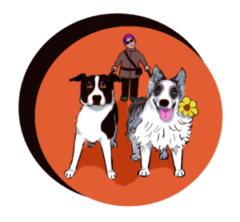
Do you ever encounter dog training clients and colleagues who are stuck in their ways and challenge your advice?
I came across this article by Harvard professor Sendhil Mullainathan: Why trying new things is so hard. His explanation for reluctance to try new things is that, in general, people don’t conduct experiments in their day-to-day lives. This got me thinking about this issue of being stuck as it relates to dog training. It’s one thing to be told there are better ways to train your dog, but quite another to discover it. How do you encourage people to try a new course of action?
These key points popped out at me.
Habits are powerful. We persist with many of them because we tend to give undue emphasis to the present.
I think this statement goes hand in hand with where you situate yourself. Are you mostly concerned about the dog? Or is this really about you? If you are expecting or promising instant results, then face it, this really is all about you.
It can be difficult to form a picture of what you want your dog to be like in the distant future, especially when coached to proceed mindfully –first with the foundational exercises, always considering the dog’s emotions, and all along calculating how you are going to get there. The present consists of mini iterations toward your goal. If you are in the habit of using harsh methods to arrive at your goal quickly, then you’re missing all kinds of opportunities for experimentation.
On the other hand, if your concern is primarily for the dog, and you are also attentive to what is happening in the present moment, then you can use your observation skills to decide if you need to try a new course of action. Observation skills come with practice; it is common to misinterpret canine body language. For example, to a skilled trainer, images of dogs posted as cute and funny can be absolutely horrifying.
Overconfidence also holds us back. I am unduly certain in my guesses of what the alternatives will be like, even though I haven’t tried them.
While many speculate about what leads to overconfidence, most agree on the outcome — these individuals focus on showing what they know or can do, and fail to pursue opportunities to learn and change. Do you know any professional dog trainers who fall into this category? 😉
I act without thinking; I automatically grab bottles of Diet Coke as I wheel my cart by.
Sound familiar? As a dog trainer you see your client repeating cues and applying unnecessary force. They’ve lived with these methods for a long time, so it makes sense that they would persist. In dog training this stems from rote learning, aka a dog trainer telling them to “do it this way”.
An expert told me to jerk the leash to get my dog’s attention. I saw on TV that I should ignore my dog when I come home from work.
This type of advice is accepted without question by so many dog owners because they believe it must be good advice. Diet coke tastes good and has no calories, so that’s what I’ll buy!
What’s the takeaway?
What does this mean for our practice as dog trainers? An interest in conducting experiments is cultivated. Rather than transmitting what you think and know, ask questions of your clients:
What did you notice? Is that what you expected? Did your dog seem clear about what you were asking? How do you know? What do you need to do to prevent this behaviour from happening? What do you need to do to encourage that behaviour instead?
For me it highlights the benefits of integrating canine body language and observation skills into our curriculum, and to encourage exploration and experimentation through questioning.
For example, in my basic manners classes we practice weaving through cones evenly spaced across the room, one dog-handler team at a time. This comes after a few classes where we focus on foundation exercises and principles of positive reinforcement training — you know, the stuff that comes before the distant future 🙂 I provide two instructions:
- Use your leash only for safety, and not for communication
- Do what you need to do to keep your dog happy, engaged, and moving
We then share what we observed, and what worked and what didn’t for individuals. During this conversation I notice a shift from my dog pulls / only wants to visit other dogs, etc to what this is what I tried that worked (and why).
Try it!
